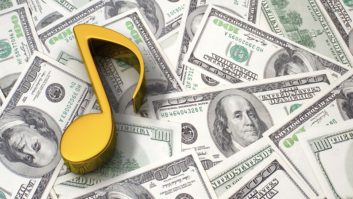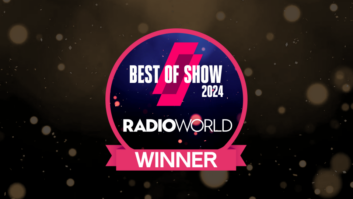Has the high cost of transitioning from tape to digital storage kept your station waiting on the sidelines to upgrade its automated systems? It may be time to take another look.
Drastic price drops in IDE/ATA hard drives have changed the price/performance landscape. The performance gap between high-cost, high-storage SCSI hard drives and IDE/ATA drives has closed dramatically, and pricing has fallen by as much as 33 percent. Reliability and new features have been added.
The good news is that automated systems no longer need to rely on SCSI drives, which were typically part of the central file server, storing the database, songs, spots and similar content. Yes, the SCSI drives are fast, but these internal drive arrays or add-on external arrays increased the cost of an automation system dramatically.
New systems
As an example, take a fully redundant, feature — rich automation system for a three — station site.
As recently as 2001, such a system could cost well over $75,000, with much of the expense attributed to hard-drive storage. Today, the budget for a similar system could come in at $50,000 or less, thanks to the decreased cost of IDE/ATA drives. Those needing a typical small one-station system would fare even better, with hard-drive storage and multiple features costing about $7,000.
But what about the raw speed and performance advantages of SCSI? The drives can spin at rotation rates up to 15,000 RPM, as compared to a maximum of 7,200 RPM for IDE/ATA. Also, SCSI drives have a data transfer rates of 160 MBps vs. IDE/ATA at 100 or 133 MBps.
“Higher spindle speeds do translate to better performance,” said Jeff Zigler, senior manager of engineering at Prophet Systems. “However in terms of most configurations, the performance offered by the IDE/ATA drives today are more than adequate to keep up with the demand. Since typically, the database is the main or only ‘application’ running on the server operating system, it becomes more a matter how many simultaneous reads and writes the ‘system’ must deal with. So a very large site might appreciate the faster access times of SCSI based solution.”
More room to work with
In terms of storage volume, IDE/ATA technology more than compensates for the difference in speed. In just the last two years, IDE/ATA has increased storage from 76 to 300 GB. SCSI capacity has increased from 4 to 146 GB over the last six years. As a result of the dramatic capacity increase in IDE/ATA drives, stations can harness the power of multitask workstations with storage-intensive applications.
In the past, most workstations could not handle complex audio production work due to the enormous storage requirements. Now, workstations are capable of handling demanding productions tasks, playing out the on-air music and spot log locally, while leaving enough drive space to capture and time shift network programming.
The lower cost advantages also come with higher reliability. The IDE/ATA drives can be used in RAID (Redundant Array of Independent Disks) arrays for redundant storage and ease of recovery, in either internal drive arrays or add-on external drive arrays.
Keeping costs down
The use of IDE/ATA drives in place of the SCSI drives provide options for lower cost of ownership, or for larger storage arrays that still provide redundancy.
High-volume storage and redundancy are key issues at the New York City and Los Angeles locations of the Museum of Television and Radio. Each museum archives more than 110,000 radio and television shows, currently stored on tape. The New York facility is testing a hard drive-based data storage system from Nexsan Technologies. Using advanced IDE/ATA disk drives, the system stores and protects data with RAID technology.
“We have about three terabytes (TB) of storage in the testing stage,” said museum director of engineering Fred Cotton. “It’s about 300 hours of programming. We’re beating up the system to see if we can break it. Things like pulling out the hot-swappable hard drives and interrupting the power supplies. But we haven’t broken it yet.”
“They have been testing that system for over a year,” said Brendan Kinkade, marketing manager at Nexsan. “In designing these systems, we factor in the possibility of a drive failure. It’s really a feature package with redundant power supplies and RAID controllers so there is no single point of failure. Our components are also hot-swappable so you don’t have to power down.”
Moving ahead
By tapping new USB and Firewire connectivity, manufacturers have designed new backup strategies. Using external, removable (portable) hard drives available with up to 250 GB, it is possible to maintain reasonably fast transfer rates. These drives allow for entire backups of the songs and spots libraries in a timely and cost-effective manner.
“Traditionally, the advantage of external over internal was serviceability,” Zigler said. “Typically, IDE/ATA drives were mounted internally and were much more difficult to service, while SCSI storage solutions were usually mounted in removable drawers and often in a separate enclosure from the server.
“Another reason for external storage was flexibility. If you have externally located or removable storage you simply hang as much as you need off of the server.”
What does this mean for those in the market for a budget-friendly automation system?
“Engineers and station management need to evaluate the options available to them for new automation systems or upgrades to existing systems,” Zigler said. “Systems using hard — drive storage have become more cost — effective due to the use of the lower-cost IDE/ATA drives, typically in RAID configurations, for internal or external storage arrays. The new options available to stations are very cost-effective, feature-rich and highly productive for their operations.”












